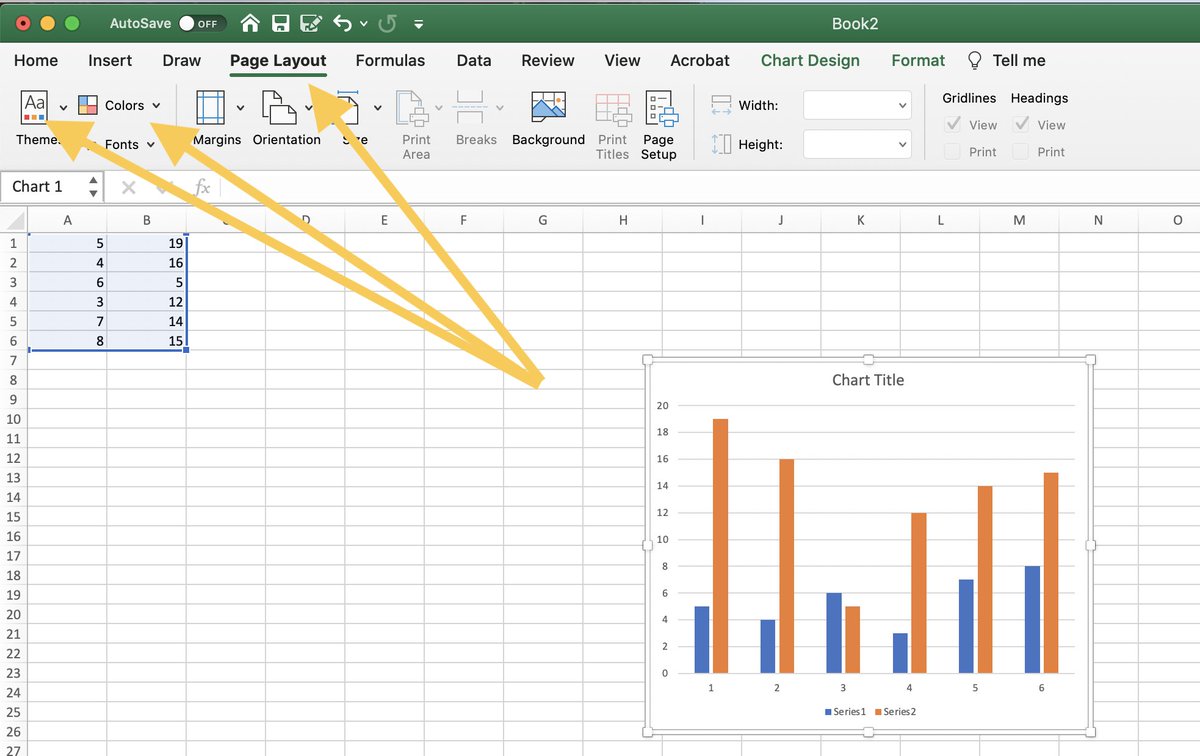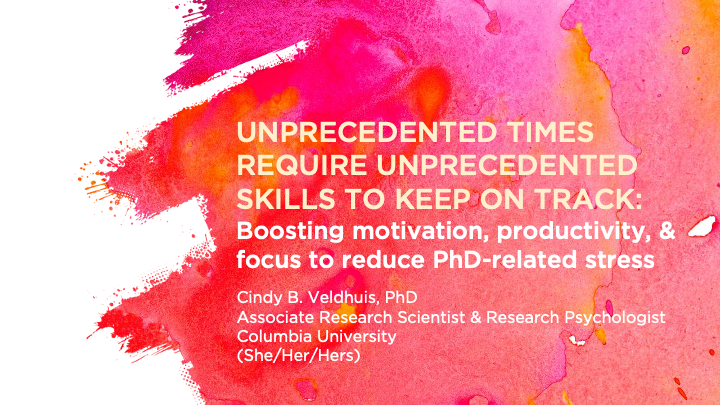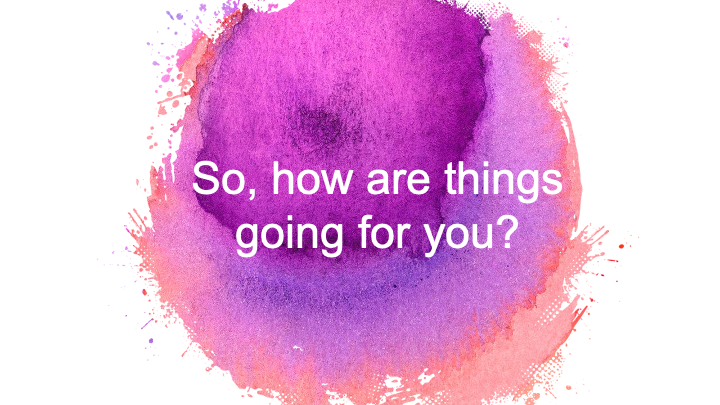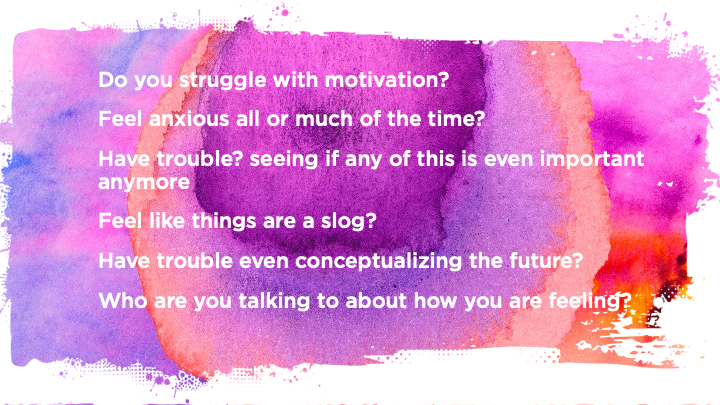
This is a presentation I did for our postdocs on applying for Ks. Given that they were already getting information on types of Ks, the forms, etc. I focused on my experiences. I also used questions from participants attending a K panel organized by @DrHaeny to focus this talk. 

Warning: “At the end the person who invited me said, “Oh, I thought at first this was going to be a really depressing talk.” LOL. I tried to share my actual journey - not some glossy version of it. #AcademicTwitter #AcademicChatter 

First I talked through my timeline. I started working on my K obscenely early. While I was waiting for my F32 to be funded, I took a class on NIH grant writing that required us to have a different section done each week to share and get feedback on. 

This worked really well for me personally as I like external deadlines. This was in 2016. Then I got my F32, which is a 3 year grant. My mentor and I had discussions about the best time to apply and decided to do so in year 2.
So I started really working on it in the second year of my F32 which was September, 2018 and submitted it in February 2019.
The further along your thinking is about the research strategy itself, the easier it is to write it. If you are writing while honing your ideas and hammering out your methodology at the same time, it will take longer.
This is a good reason to get your aims done super early and get a lot of eyes on it and to really get that in good shape before starting the strategy itself. If everyone is on board with your aims, it really makes everything easier down the road.
At Columbia, we're required to have mock reviews of aims & a mock review of our entire grant. This helps create deadlines but also to get feedback from people potentially way outside your field. My mock review was December 12, 2018 which gave me a full 1.5 months to revise.
BC my K99 was drafted so early, I got tons of ppl to review & give feedback - I think I counted that I had upwards of 20 people review it. I also submitted a version of it as an app for intramural funds to pilot my methodology so that I had some preliminary and feasibility data.
After I submitted, I spent the next few months just so anxious. I’m not the kind of person who can submit a grant and forget about it! (though I can do that with manuscripts).
I got my score in early June and summary statements on 6.21.19 - resubmitted on 7.10.19. This was made possible by fact that I was at @RSA when I got my summary statements & thus we could meet with my PO and other NIAAA ppl - as well as members of my K mentoring team in person. 

I also was sharing an airbnb with my mentor - so I had 24/7 access to her in revising it for almost a week. (poor mentor!)
I think some mentors don’t remember how stressful all of this is as they are a bit removed – but it can literally feel like your whole future – or at least your livelihood – rests on this.
I was very worried that my F32 would end before my K99 was funded and although my mentor had previously promised to hire me onto her R01 if that happened, things had changed for her as well.
Hence the high numbers of "panics" in my timeline!
These are the three major deadlines for Ks. This slide may be less helpful for people outside of our school, but it shows that I recommend having a full draft of your grant done 1.5 months before the deadline to start getting feedback so you can make edits. 

This slide may be helpful as I included what are likely the timelines for Ks after you submit. So like if you submit Feb 12, review meeting will likely be in June and you will get your score soon afterwards. Summary sheets likely get released in July, council meets in sept... 

Institute funding meetings happen in Oct/Nov, institute director decision in Dec and the official just in time in Nov/Dec. Then the notice of award in March/April/May.
So, if you submit in Feb, the earliest you are likely to be able to resubmit is in November (resubmission deadlines are 1 month after the initial submission deadline) unless you get your summary statements early & can turn it around quickly. Then you go thru whole timeline again.
Of note, these timings are for NIAAA. Other institutes may have somewhat different timelines or processes for deciding who gets funded after the council meeting.
If you are applying to the HIV/AIDS deadlines, all of this is faster (a colleague did a submission and resubmission and was funded 1 year from initial sub). F31s and F32s are also faster. I’ve mapped out a possible F32 timeline if anyone is interested.
My experience is it takes 1.5 years(ish) from submission to $$. (I applied feb 2019 & was funded in sept 2020 - this included very fast resubmission - if I hadn't had to resubmit, it'd be shorter. If I had resubmitted @ the next deadline, it would have been maybe 4 mos longer?).
So next I talked about the research strategy.
(sorry if this is seeming like a stream of consciousness - it made sense in my head, less so as I write it out).
(sorry if this is seeming like a stream of consciousness - it made sense in my head, less so as I write it out).

It's important to figure out your next logical steps in your research - what is the story of what you have done thus far and what are clear next steps. So, this is a graphic I created to demonstrate where I’ve been and where I am going. 

Big shout out and thank you to other K recipients for sharing their apps with me as that helped me figure out how to frame things, graphics to create, etc.
(do read as many apps as you can get your hands on - even completely outside your area).
K reviewers didn’t get a strong sense as to what my next steps were after the K. Honestly, that is because I didn’t know either. I didn’t have a sense as to a future at all so it was hard to conceive of it.
Mentors, this is something you can really help your mentees think through. Help them understand their potential and possibilities.
It can be hard in the churn of academia to really see your own potential or what might be possible for you. It can be hard to get a sky high view on your trajectory. Mentors can help.
This is a conceptual figure I included in my research strategy. Reviewers really liked it. I think it was clear, colorful, had groovy little bidirectional arrows (psychologists love those!) and I think was easy to understand. 

It also wasn’t so specific as to make reviewers say “hey, why didn’t you include X, Y, and Z!”
This is data from my F32, which provided preliminary data for my K99 application. Preliminary data is good to not just motivate the study, but also to demonstrate the logical steps in the progression of your research. 

I had gotten pilot funding for my study so I piloted my study with 8 couples (K will include 50 couples). This was a partial timeline from one of the couples in my study. This showed that my plans were feasible - though reviewers had some concerns that I will share in a bit. 

At our K webinar, someone asked about the importance of innovation. Innovation is not a scored criteria for Ks (or Fs) meaning it is not something that should impact your score.
That doesn’t mean it won’t - so it is important to be thoughtful about that: make it innovative enough for a K but not so innovative it seems unfeasible or too big a risk.
Before you start figuring out your project, you should really step back and figure out what you want to be when you grow up.
What kind of researcher do you want to be? In 5 years, what do you want to be expert in? What methods do you want to say you have skills in? What do you want to be known for. 

Then think about what you need to do to get there. What training do you need, what mentorship do you need, and what research is a logical step towards that.
Really, Ks (at least in my institute) are most highly evaluated on the training program - that is what can make or break your application.
Post hoc I made a 5 year plan. I strongly urge you to do that before you start and get your mentoring team’s input. You can use the chart a couple tweets up as a worksheet to help you start.
You also need to create a detailed, comprehensive, feasible training plan. It should be a mix of mentorship, experience, and didactic training. 

Mentorship team. There are some tensions here - you need mentors who are senior, have mentored Ks before, and are super well-funded, but those may not always be your go-to people (or they may be!). 

So you may need to create a mix of big names and also big names who are more junior. I am very lucky to have @EricSchrimshaw and @epi_kerrykeyes on my team along with some fantastic non-tweeters.
Make sure you have people on your team you feel are fully invested in you, who you feel you can be completely honest with, and who will be honest with you.
For my F32, I didn’t really feel like I made the best choices for my mentorship team - everyone was great, but I had no junior people on my team, and that felt like a huge hole.
Choose your team carefully and make sure that they have discrete skills and will make unique contributions to your mentorship. If you can graph out what they each contribute and show little overlap, that will help. 

So, I am going to share some of the main comments from my summary statements - both good and bad. The bad for obvious reasons, the good so you know what kinds of things they appreciated. 

One thing I realized in hindsight is that reviewers for Ks & Fs aren’t just critiquing your application - they are trying to help you. If they say you need X from your mentors - they are helping you get best mentorship & training possible. It can help to keep this in mind.
Initial submission. Main critiques: not enough 1st authored papers, why I needed more training after an F21, no senior authored pubs (this isn’t a criteria for K99s, though it is for other Ks), they didn’t like that my primary mentor had been my F32 mentor, 

reviewer 2 said it wasn’t innovative enough, not enough detail on the R00 phase, no plan for independence, and insufficient experience as a mentor myself (not a criteria for K99s but it is for other Ks).
Hilariously even though I worked in OB/Gyn for a few years and mentored all the residents and fellows on their research, one reviewer totally threw shade on medical research and thought that was not real experience.
Positives
overall publication record and productivity, that I was a psychologist, my letters, my hx of funding, my mentorship team was interdisciplinary and strong, strong relat with my primary mentor, comprehensive mentorship team, Columbia provided an exceptional environs.
overall publication record and productivity, that I was a psychologist, my letters, my hx of funding, my mentorship team was interdisciplinary and strong, strong relat with my primary mentor, comprehensive mentorship team, Columbia provided an exceptional environs.

For the research - they said it was understudied, innovative (take that reviewer 2), like the pilot data, liked that the study was a clear extension of my work, it had rigor in the methods and they liked my model. Training seemed logical and heavy on quant methods.
In the resubmission, the main change we made was that we made my primary mentor a K mentor and brought on a faculty at Yale as my primary mentor.
One challenge is that there really aren’t a ton of people out there with a ton of NIH funding and mentorship experience who study queer women - so not like there are a ton of options.
We made a VERY clear plan for my independence from my mentors, and built out the detail on the R00 phase.
When you create your response to reviewers, I recommend you create a table of the comments (in your own words, noting which reviewer said what) in one column and your plans to address each in the next column (I have a colleague who uses this format for their actual introduction).
Put all positive comments in a sep document - want to remind reviewers at the outset what was strong about the application. It's also helpful so you remember what they liked :)
So, something happened after I resubmitted that was super stressful. Well, two things happened. First, my PO was changed. Originally my program officer was the same person as was my PO for my F32 and we had a good relationship and he was SUPER supportive. This was very hard.
My K99 was also sent to a special emphasis panel which meant it could be reviewed by. all different reviewers. That was panic inducing.
Resubmission feedback. critiques:
not enough first authored pubs, no clear next steps. They felt my new mentor worked too far away (his lab is in Chelsea - which is straight down the 1 line from my house), and they worried he had too many mentees to have time for me,
not enough first authored pubs, no clear next steps. They felt my new mentor worked too far away (his lab is in Chelsea - which is straight down the 1 line from my house), and they worried he had too many mentees to have time for me,

too little detail on the R00 phase, lack of detail on the covariates in my K99 study, and the %s and hours in my training plan didn’t add up.
Positives
Improved # of first authored pubs, clear plan towards independence, my persistence (LOL), mentorship, innovation, rigor, piloting, model, research grounded in my work.
Improved # of first authored pubs, clear plan towards independence, my persistence (LOL), mentorship, innovation, rigor, piloting, model, research grounded in my work.

So here are some tips as you think about your K (this applies to Fs as well)(don't worry, we're almost done!) 

Create relationships galore with potential mentors and collaborators - as well as letter writers. You need 3-5 letters of rec and it is good if they aren’t all from your PhD or your current institution. 

Be Lady MacBeth - and I don’t mean wash your hands more or encourage anyone to kill someone - what I mean is, be strategic. Make a clear plan for yourself. Create a clear story about your past and your trajectory that makes sense and is compelling. 

Make a STRATEGIC training plan that is fully motivated by where you want to go and very clearly demonstrate why you need that training. Weave your strategy throughout the application!
Publish, publish, publish. Use pre-prints if you have papers that help with the story of your program of research that won’t be published in time. 

I’d give you numbers on my # of pubs, but it won’t help you. I know people who have gotten Ks (incl K99s) with fewer than 5 pubs. I know someone who got a K08 with 2 publications - neither of which were research-related.
I had been told 10-15 pubs was good, with half being first authored. Seems reasonable. May be enough - may not be. Hard to say. Use pre-prints. Seriously - they count.
Think about your why. WHY do you need this funding mechanism to get you where you want to go. Not being able to get a job without sweet sweet NIH cash is not enough! 

These next couple of slides are just about connecting to your WHY. If you have seen my productivity presentation, this will be familiar to you. 

Hope this was all helpful. There may well be other opinions out there that are far better than mine - very happy to hear other views! The K is challenging, but you can do it - and you will feel SO GREAT once it is in.
A reviewer at a mock review (who has led study sections, though not for Fs or Ks) suggested that perhaps your study doesn't need to be super innovative - but your program of research should be.
• • •
Missing some Tweet in this thread? You can try to
force a refresh











